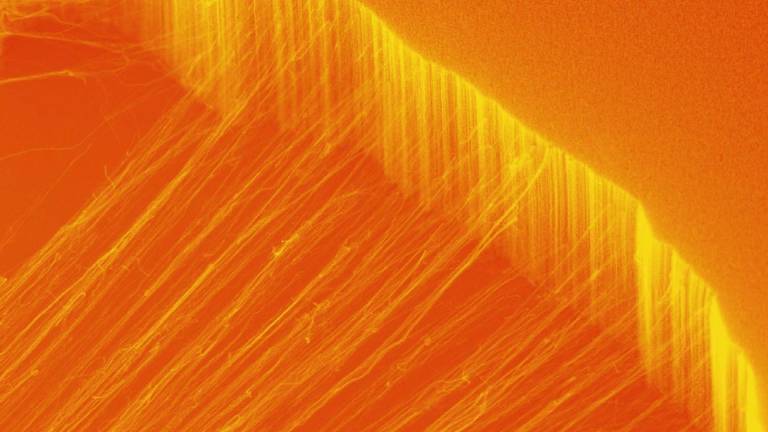Heat has always been the enemy of electronic engineers. It compromises the reliability of the components or even leads them to breakage. For this reason, thermal paste is widely used in PCs, which are accompanied by heatpipes, fans and even liquid cooling systems.
The goal is to remove the heat as much as possible sensitive components and disperse it in the environment. However the need to increasingly reduce the size of the devices increasingly exacerbates this challenge (current CPUs have production processes in the order of a few nanometers).
At the moment the most used materials are i metals, such as copper, given their high thermal conductivity in relation to the cost. The heat, however, passes through them equally in every direction, therefore spreading to every other component in thermal contact with the metal.
For greater effectiveness, a conductor should channel heat in one direction only, not perpendicular. In this way, the heat would travel along this direction without dispersing itself.
A similar conductor would greatly simplify the life of thermal engineersbut creating it is very difficult.
University of Tokyo scientist Shingi Yamaguchi, together with a group of colleagues, created a material with similar characteristics, formed by carbon nanotubes properly aligned, which conduct heat only in their direction. This new solution has the potential to revolutionize the design of cooling systems for computers and other devices.
But this discovery does not come from nothing. The very high thermal conductance of carbon nanotubes was already known to materials scientists (1,000 W m-1 K-1, more than double compared to copper which stops at 400 W m-1 K-1).
The problem lay in obtaining a real material from a set of nanotubes. The method used consisted in making them deposit on a plastic substrate, thus forming a layer. In this way, however, the nanotubes were arranged randomly or their alignment was inaccurate.
As a result, due to the poor contact surface between them, the material had too low thermal conductivity. “It is essential to eliminate these structural deficiencies in order to use the high thermal conductance of individual carbon nanotubes in conglomerates of aligned carbon nanotubes,” said Yamaguchi.
The solution developed by the scientist and his team is simple: just create a material made up of perfectly aligned nanotubes, to ensure good thermal contact between them and thus maintain their high conductive properties.
This is possible thanks to a technique known as controlled vacuum filtration. Already in 2012 some physicists had discovered that carbon nanotubes can be organized in a structure where they align themselves, as happens in a crystal.
Specifically, this is achieved by mixing the nanotubes in a liquid containing a surfactant, to reduce their surface tension. After that, the nanotubes begin to align themselves on the surface, maintaining a high density.
Subsequently, the liquid is slowly and carefully removed by means of a filter using the vacuum. The result obtained is a thin layer of perfectly aligned nanotubes, which they have extraordinary properties.
The Japanese group of scientists says that this new material has a thermal conductance of 43 W m-1 K-1 in the direction of alignment of the nanotubes. Transversely to them, this value drops by three orders of magnitude (0.085 W m-1 K-1, almost like fiberglass).
In short, the nanotube film has the ability to conduct heat 500 times better in one direction than the other. An asymmetry never observed in similar materials.
The explanation is simple. The nanotubes are thermally in contact thanks to their “endings”, and the heat moves easily from one to the other. On their length this occurs with more difficulty, because the contact surface is smaller.

Yamaguchi and his team also pointed out that this material also has limitations. Although the asymmetry between the thermal conductivity in the two directions is impressive, its maximum value is only 43 W m-1 K-1, comparable to a lead / tin solder.
Scientists think that although the nanotubes are in contact at their ends, the connection is not perfect, causing a loss of thermal conductance at each “joint” between one nanotube and the other. So the shorter the nanotubes are, the more leaks occur.
“This suggests that the thermal conductance in the direction of alignment of the nanotubes may be even greater with longer carbon constituent nanotubes,” said the scientists. At present, 200 nm long nanotubes have been used.
However, this is not a simple undertaking, given that the longer length could adversely affect the self-alignment of the nanotubes during the creation of the film. However, Yamaguchi and colleagues are already working to reach an even better goal with other experiments. For now, the engineers just have to wait with their fingers crossed.















